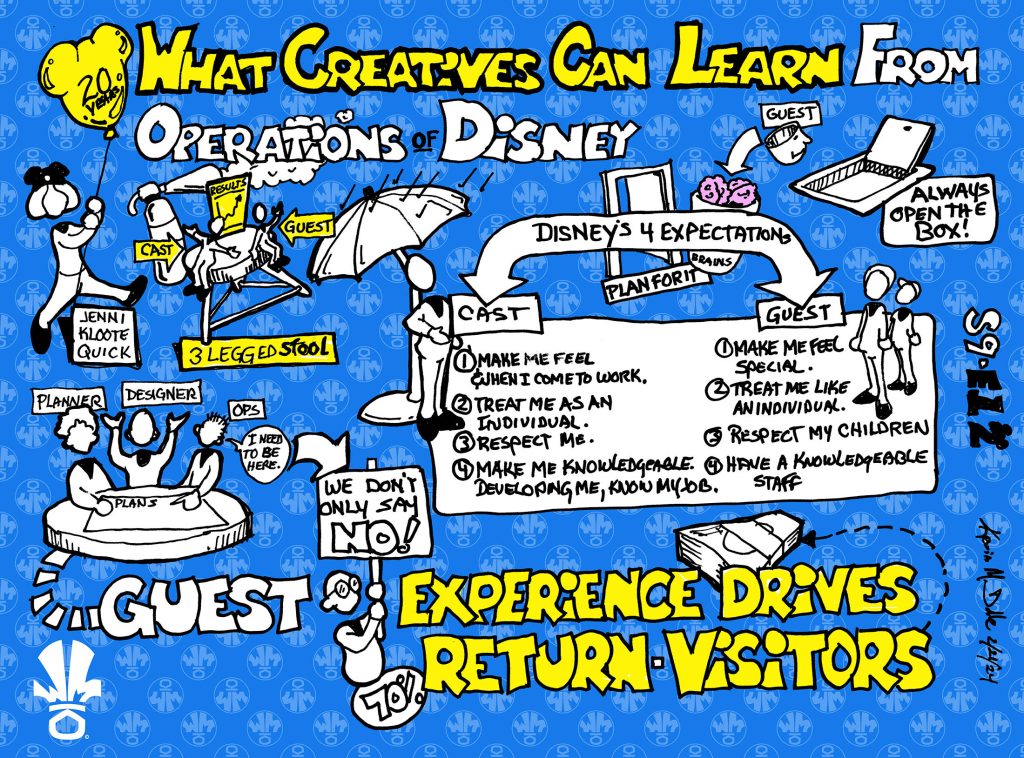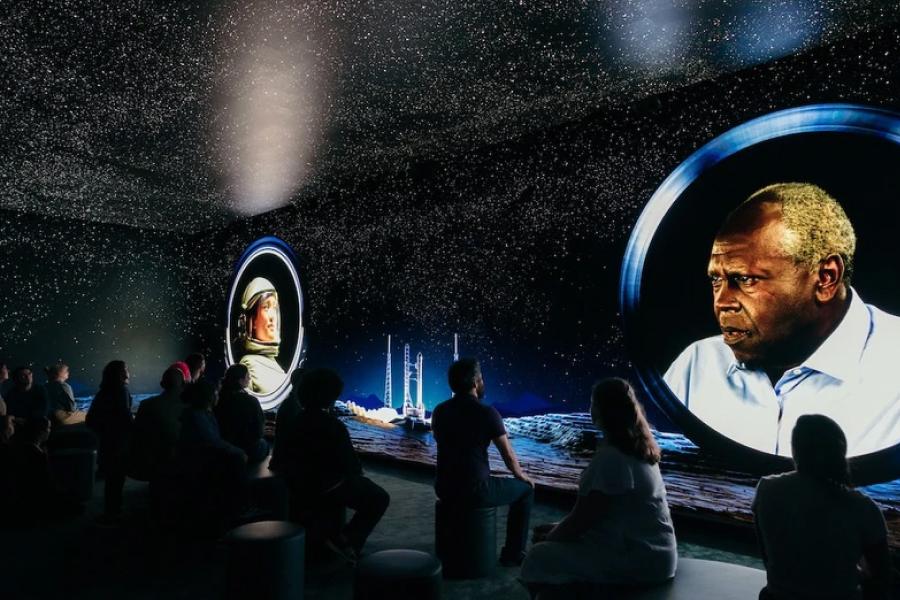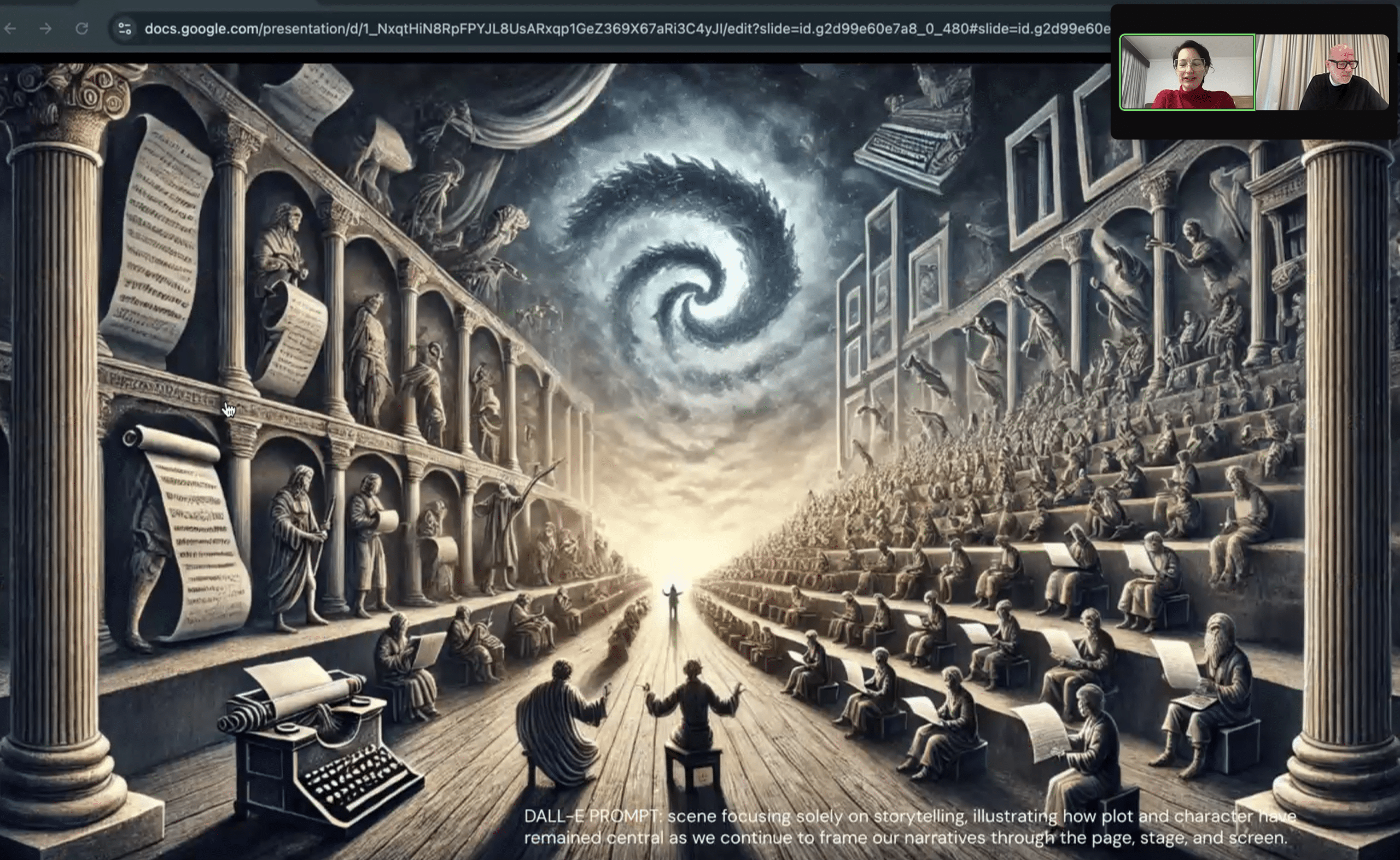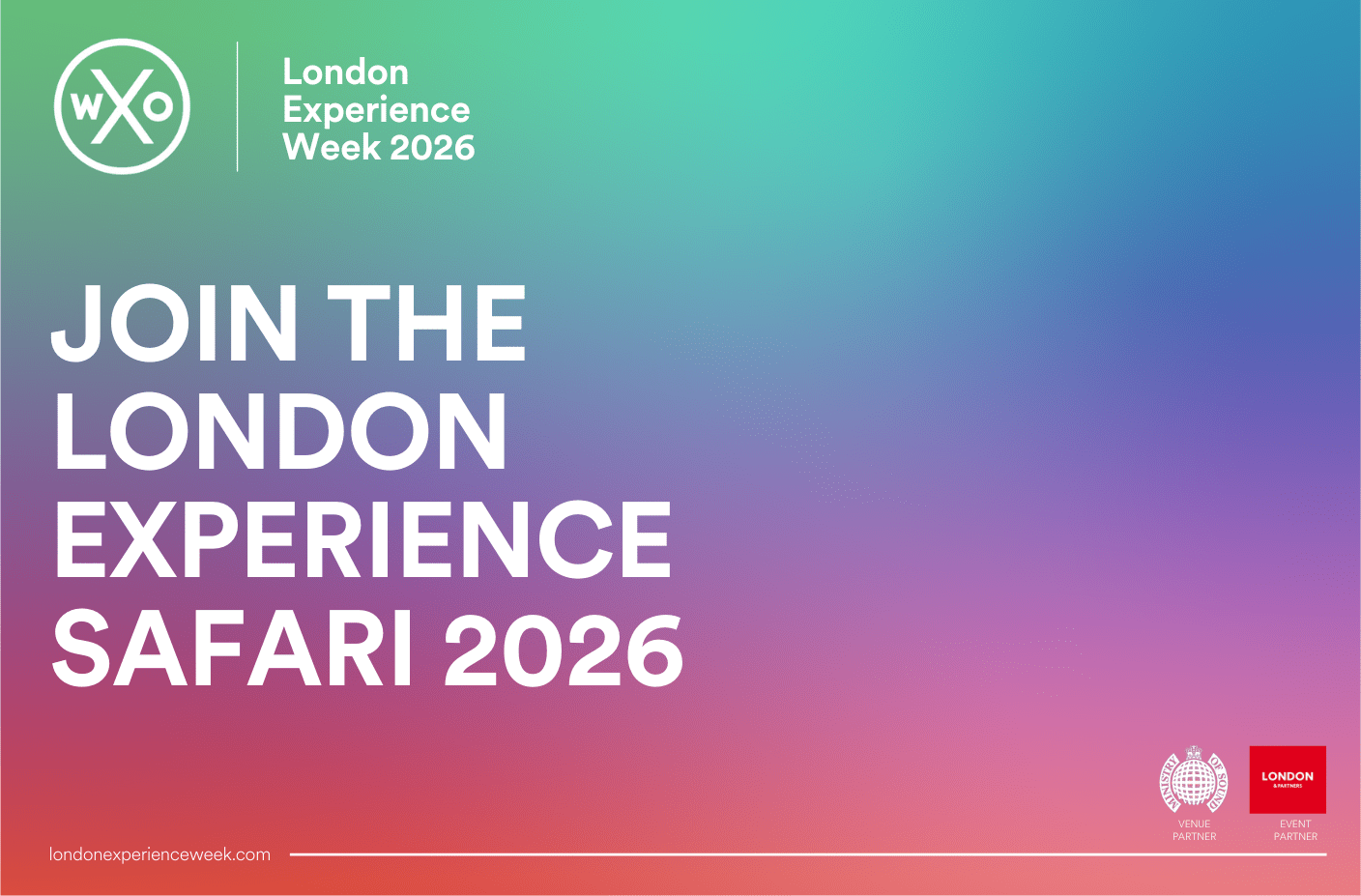At the World Experience Organization, we’re big believers in the need to break silos.
Sticking to our sectors and disciplines keeps us away from vital, transferable information and skills that could make our experiences better as we look to make better memories, make more money, and improve people’s lives.
This applies not only to different sectors, but also to different experience professions. And nowhere is this divide clearer than in the gulf that often exists between creative and operations.

Sometimes, creatives and operators work together from the beginning of a project. But more often than not, they work in separate silos, until they’re thrust together as opening day approaches.
Just think: how could experiences be improved if the day-to-day operations were created alongside each jaw-dropping attraction? (This is something we started to explore in our earlier Campfire, Ten Rules For When Creators Meet Producers, with experience strategist Carolene Méli).
So in this WXO Campfire, operations expert Jenni Kloote Quick shares lessons from her more than 20 years of working in operations and with creative teams at Disney, with a special focus on Disney Springs, the brand’s shopping, dining and entertainment area that’s open to the public.
From driving a backlot tour shuttle at MGM Studios to working in animal programmes, education and entertainment, Kloote Quick has seen the ins and outs of operations across divisions including animal programmes, education, character management and entertainment.
You’ll get a sneak peek into the challenges that could have been dealt with earlier – and more cheaply! – if operations had been looped into the design and creative process from the start. And armed with Kloote Quick’s insights, you might just avoid falling prey to the same pitfalls in your own experiences.
The Superpowers Of Your Operations Team
So what does it mean to work in operations?
“Operations is the bridge that can translate between internal teams and external guests.”
Jenni Kloote Quick
If you want to get the most out of your operations team, remember that operations people are first and foremost…
- Creative problem solvers. Whether it’s a technical problem, guest request, scheduling issue, or inclement weather, ops is your first port of call for getting it sorted.
- Firefighters. This is particularly true when it comes to putting out last-minute fires. When the show directors decided that Disney Springs needed a Christmas tree trail just two weeks before Thanksgiving – compared to the usual five-year lead time for planning Christmas scheduling! – Kloote Quick managed to make the magic happen in time.
- Guardians of the creative vision. This means not only making sure that the reality is true to the vision at launch, but that as time goes on the guests still see exactly what the creative team intended, despite wear and tear. This includes theming, look and feel, and attention to detail, and means a lot of pestering the maintenance team!
- Guest experience specialists. Operations are frontline staff who deal with guests every day and are experts in “service recovery”: everyone leaves as happy as possible. Guest experience is key to return visitors: in surveys of first-time visitors to Disney, 70% return and of those, over 50% do so because of an interaction with a team member.
- Safety mavens. Kloote Quick emphasises that operations don’t only say “no” to creative requests… but safety is always the number one priority and therefore some things can’t be implemented.
Let The Light In: The Importance Of Involving Ops Early On
Any project is likely to have a few snags and unseen issues that only become visible when it’s rolled out. However, involving operations in the design process at a much earlier stage can help make sure that the functionality of your design is given as much emphasis as how it looks, saving you both headaches and money.
Kloote Quick highlighted a few classic examples of what can go wrong when this doesn’t happen. At Disney Springs, Imagineering had designed several stages which looked beautiful, but perhaps weren’t as functional as they could have been. In particular, they often hadn’t considered the need for electricity and lighting!
At the High Line stage, there wasn’t enough lighting for the performer to be seen, resulting in guests tripping over their equipment and a technician having to do some questionable rigging to get a light in place. In another spot, some living statues who largely performed at night for photo opportunities weren’t lit sufficiently, so ops had to put a light pole on a nearby building, disguised with plants.
And a feature stage near a restaurant, complete with water fountains, looked gorgeous – but turned out to have absolutely no lighting or electricity points. The sound of the water feature was also too loud, and the restaurant had a dj on the decks nearby – rendering the stage unusable.
As a final warning, a stage at the town centre looked great at the initial walkthrough, complete with lights and an electric box. However, this later turned out to be completely empty, and Kloote Quick had to run extension cords to a building across a walkway, covered with mats and safety equipment. As she says, “always open the box!”
Everywhere You Go, Always Check The Weather
Otherwise known as: always have a rain plan…
In Florida, it’s hot and often humid or rainy. While some performers at Disney Springs only appeared at night, others were used during the day, but many of their designated spots had no cover from the intense sun. Mismatched umbrellas provided a fix, but if the weather was taken into account early on, there could have been a more creative solution.
It was a similar situation at a margarita bar stage, which appeared to have a roof in construction, but turned out to be a pergola without a roof. Cue more umbrellas.
It’s not only the weather that you have to take into account, of course. The market stalls area of Disney Springs is covered and has great acoustics, making it the perfect spot to place performers… until the owners of third-party merchandise stalls started complaining that the music was pulling people out of their shops to watch the band play. After six months of complaints, Kloote Quick had to agree to only use the space when the weather was bad.
Even when the construction of a space lets you down, there are operational fixes that can help resolve the problem. A strolling piano on a moving platform is able to manoeuvre through the park depending on the weather. As well as being practical, it provides a magical moment and can be used for spontaneous duets with roving performers. A close-up magician is another spectacular (and portable!) solution to unpredictable weather conditions.
The 4 Rules To Create Return Guests
Every experience wants return visitors – and for them to bring along their friends and family. To help guarantee this, Disney surveyed visitors to come up with these four guest expectations:
- Make me feel special.
- Treat me like an individual.
- Respect my children.
- Have knowledgeable staff.
A great example of this in practice is at the Bibbidi Bobbidi Boutique at the Magic Kingdom. Guests can make an appointment at the shop, but even if a child walks in last minute, they can get “pixie dusted” with a wand and recited a small poem. This is simple and costs nothing, but people remember it long after the event. Acknowledging little girls in their princess costumes also not only makes the child feel special, but validates the effort made by their parents.
Other simple, magic moments that Disney excels at is by allowing guests to go guest relations and getting a badge for the day that tells cast members if it’s a special occasion like their birthday or honeymoon, so they can provide special experiences like sitting in the front row of a show or rollercoaster.
And while adults aren’t allowed to dress in full costume at the parks, “Disneybounding” – where they wear merchandise hinting towards their favourite characters – provides another way in. Finally, getting cast to wear their hometowns on their name badges is a very simple way to spark a personal interaction.
The 4 Rules To Create Happy Teams
“You can design and create and build the most wonderful place in the world, but it takes people to make the dream a reality.”
Walt Disney
Kloote Quick talks about Disney’s “three-legged stool”, with the three legs being cast, guests, and business results. You need all three for the stool to balance – and operations is a crucial part of keeping your cast (or team) happy. To do this Disney has developed four cast member expectations, which are:
- Make me feel valued when I come to work.
- Treat me as an individual.
- Respect me.
- Make me knowledgeable, develop me, and know my job.
For young, frontline teams in particular, it’s especially important to show that you know how to do their job, or else admit that you don’t and that they can teach you something. This not only makes them feel good, but keeps you learning.
“Training is the number one thing you can do for your teams to ensure they serve guests in a way that makes them return.”
Jenni Kloote Quick
At Disney, training is a combination of classroom-based education about the company’s heritage and basic rules, but more important of on-the-job training so people can experience what happens when things go wrong. If you hire well, train them, and keep them up to date with pre-experience meetings, this gives teams the tools and equipment they need to serve the guest, and empowers them to find a way to make the experience right for them if they can.
Finally, Disney grants Legacy Awards to the top 2-3% of cast members, marked with a special name tag, exclusive print, and a party at Magic Kingdom. This doesn’t cost a lot, but is great for morale not only for that team member, but for their colleagues, too.
And one last thing – don’t forget to have fun! Kloote Quick emphasises the important of showing your team that it’s okay to be silly and playful at work. This might be easy at Disney, but a lot of experiences could also benefit from a dose of fun.
“We train our staff that there is no wrong way to play. There is an intention to play, for sure, and we put untold hours and effort into designing for that. And in such an environment, play erupts, and all is perfect.”
Mark van der Pol
(For more on designing the perfect employee experience, we recommend our Campfires A Pattern Language For The Experience Of Work, Staging Employee Experiences, and Reinventing Employee Experience In The Post-Pandemic Workplace.)
The WXO Take-Out
When we bridge the divide between sectors, professions or departments, magic happens. Breaking the silo means breaking open untapped reservoirs of knowledge and insight – and as well as avoiding costly mistakes, can make our experiences richer than they might otherwise have been.
Starting this collaboration process as early as possible and putting ego to one side is an easy win. (For more on creating a shared language for cross-sector teams to collaborate, see How To Bring Different Worlds Together.)
We’re also struck by the importance of frontline team members and guest experience specialists in creating return visitors – the holy grail for any experience. Hiring, training and empowering your teams to deliver your creative vision enhances it for all three legs of the stool.
So next time you’re designing an experience, ask yourself:
- At what point in the process do you bring in your operations partners?
- Is ease of daily operation part of your creation process? How do you ensure the smoothness of the daily running of the experience?
- How much time do you spend on the experience of not only your guests, but also the people who will work there? Who are they, and what do they need to know to bring your vision to life?
Want to come to live Campfires and join fellow expert experience creators from 39+ different countries as we lead the Experience Revolution forward? Find out how – and the current speaker line-up – here.





